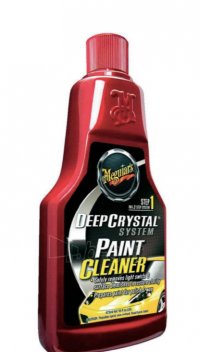Thanks. Am I right in thinking that the clear coat layer is much thicker for obvious reasons
The clear coat will be much thicker than the colour coat ( clear coat 25 - 50 microns)
Factory applied Clear coat is in fact incredibly hard and resistant to abrasion.
light to medium swirls will polish out.
Large areas, affected by swirls, like on a Van, are best machine polished using either a two stage process :
a cutting compound to reduce the surface thickness of the clear coat, allowing a new surface to be exposed,
followed by a polish, to further polish the remaining clear coat.
or a product that is a two stage single application product. : one product that simply breaks down from a cutting compound into a polish (machine applied) the rotating and abrasive action breaks down the “grit” from Cutting grade to polishing grade (clever stuff)
the clear coat can be repaired more easily if it’s just the clear coat that is damaged. Small repairs can be carriers out with a little care, when the colour coat or primer has been exposed it’s a bit More difficult.
surfaces marks appear as scratches can be polished out by hand, often what looks like a long white mark (hedges etc) will come out totally with a bit of paint cleaner, polish and re wax.
as LRGS says if you can feel the scratch with a finger nail the clear coat has been damaged to the point where polish will probably not remove the mark fully it will generally need to be infilled with more clear coat, flattened and machine polished By a competent person.
Cutting and polishing can Damage paintwork (beyond repair) if done incorrectly. All cutting will reduce the thickness of the clear coat. Understanding this is key to renovation of a damaged clear coat.
light damage : I.e swirls : for an amateur a Dual action (DA) polisher with an appropriate sponge mop and dual cut / polishing compound is the safest way to attack your problems, but it is not risk free




















